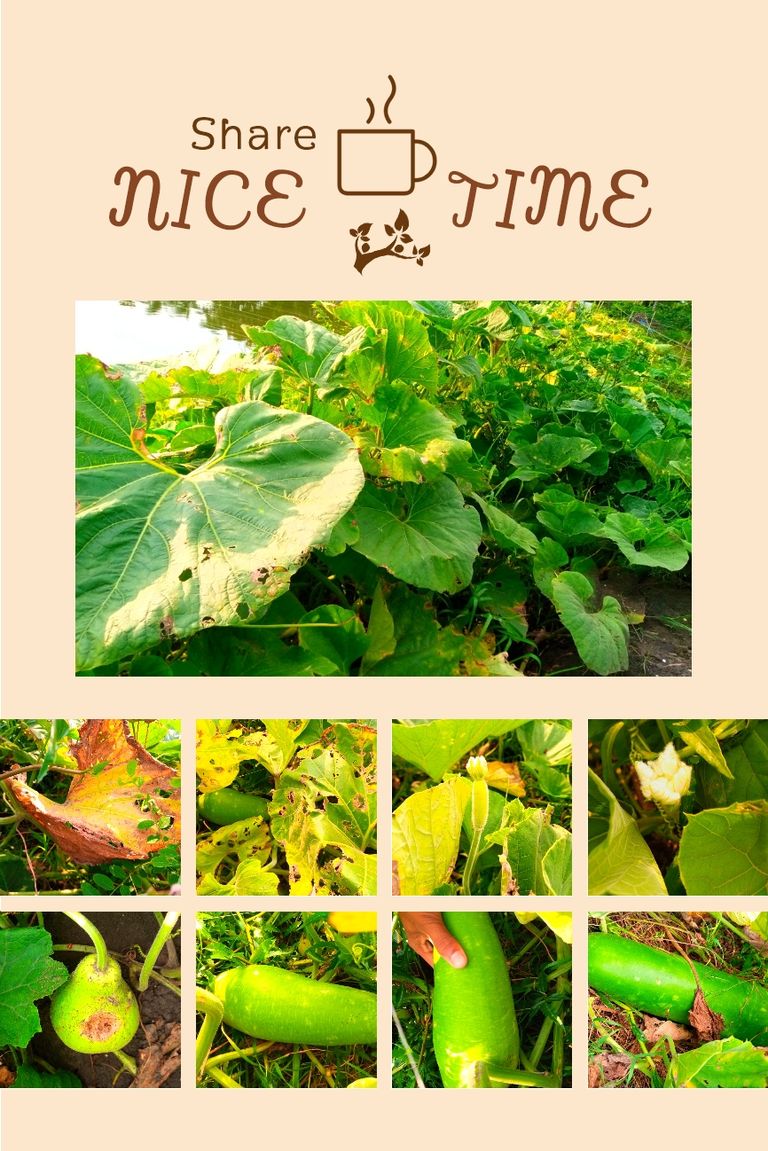
land preparation
Land selection and land preparation
For cultivation of these crops, land with good irrigation and drainage facilities and adequate sunlight should be selected. Disease and insect infestation can be reduced if the same crop can be avoided repeatedly on the same land. Soil and pit should be well prepared for extensive root growth.
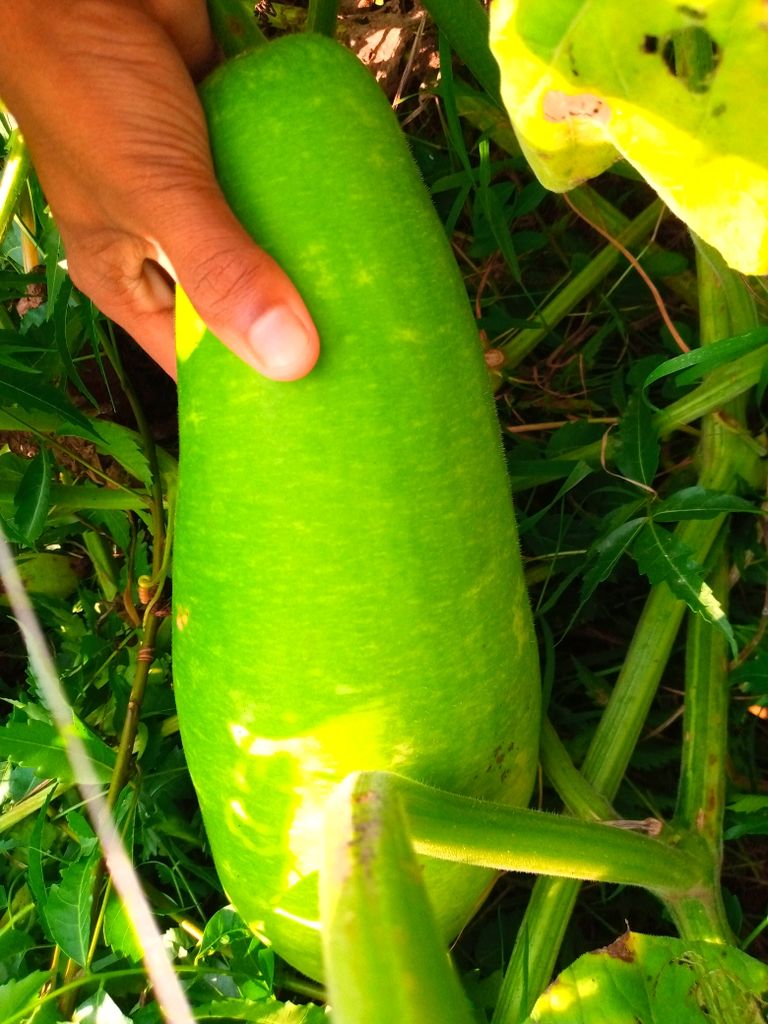
First of all, from the preparation of the soil of the gourd plant to the time of flowering, the soil must be prepared before the seed of the gourd plant is planted. Before preparing the soil, the first place to be planted should be cleaned and the small thana third should be made into a round shape. The soil should be raked with Niraniya or Achara and mixed with password 15% organic fertilizer and if green sir is prepared then green sir maximum 15% should be prepared in this way in the soil and should be placed and left on the same day after which the plant will be seen. The tree is growing slowly and at this time the tree should be surrounded by a fence to protect it from goats or cows or any other animals and a bus kanchi or any stick should be buried in the middle so that the tree rises upwards or in flat ground if necessary. Then the place should be fenced first otherwise any kind of animals may come and eat or destroy the tree.
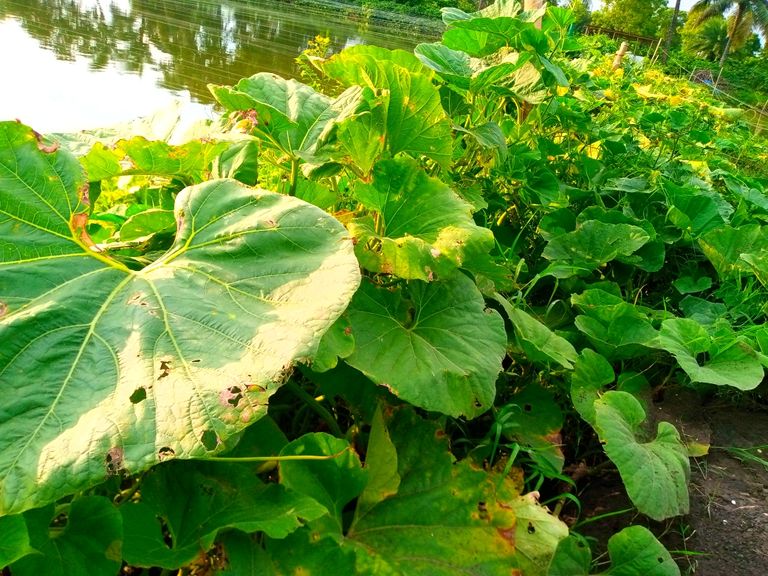
Gourd leaves are green and soft. Male and female flowers bloom in 42-45 days and 57-60 days after planting respectively. Light green color fruit shape is long (40-45) and girth about 30-35 cm. Each fruit weighs 1.5-2 kg. An average of 10-12 fruits per tree. First fruits can be harvested within 60-70 days of planting. Gourds are mainly winter season. Yield is higher in winter. It is tolerant of high altitude and heavy rainfall so it can be grown throughout the year. It can be cultivated throughout the year in all areas of Bangladesh. Bhadra can be grown first as an advance crop for winter cultivation.
Planting : Bhadra-Ashwin.
Lifespan: 120-140 days
Yield: 45-50 t/ha (6-7 t/bigha) in winter and 18-22 t/ha (2.5-3 t/bigha) in summer.
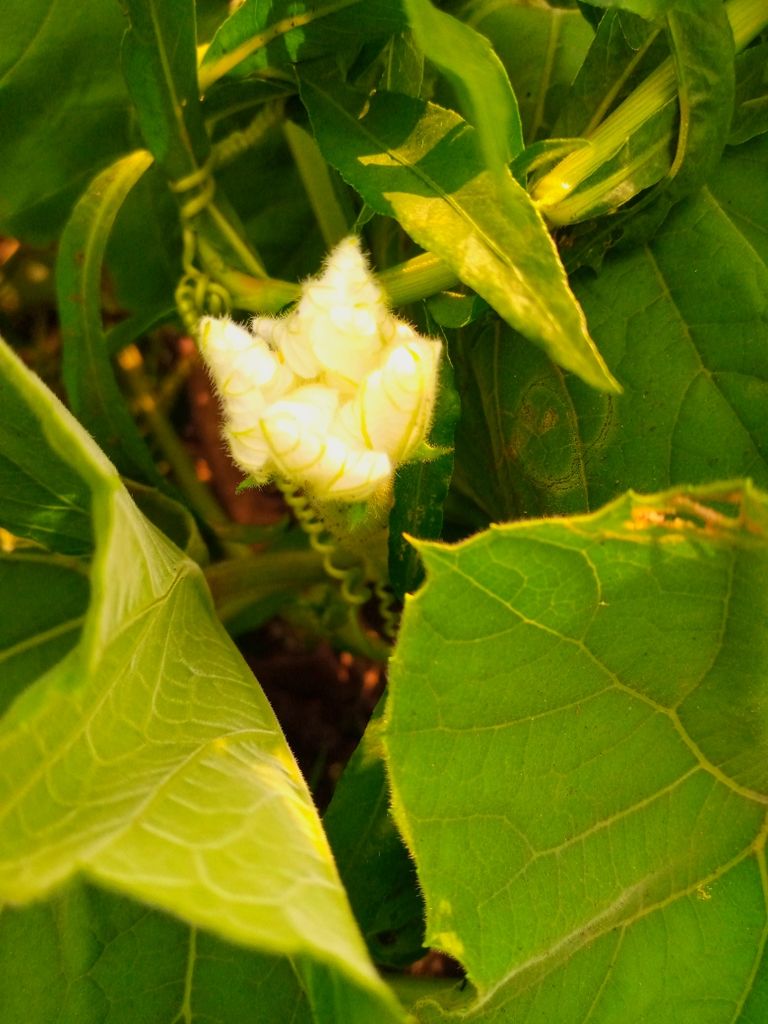
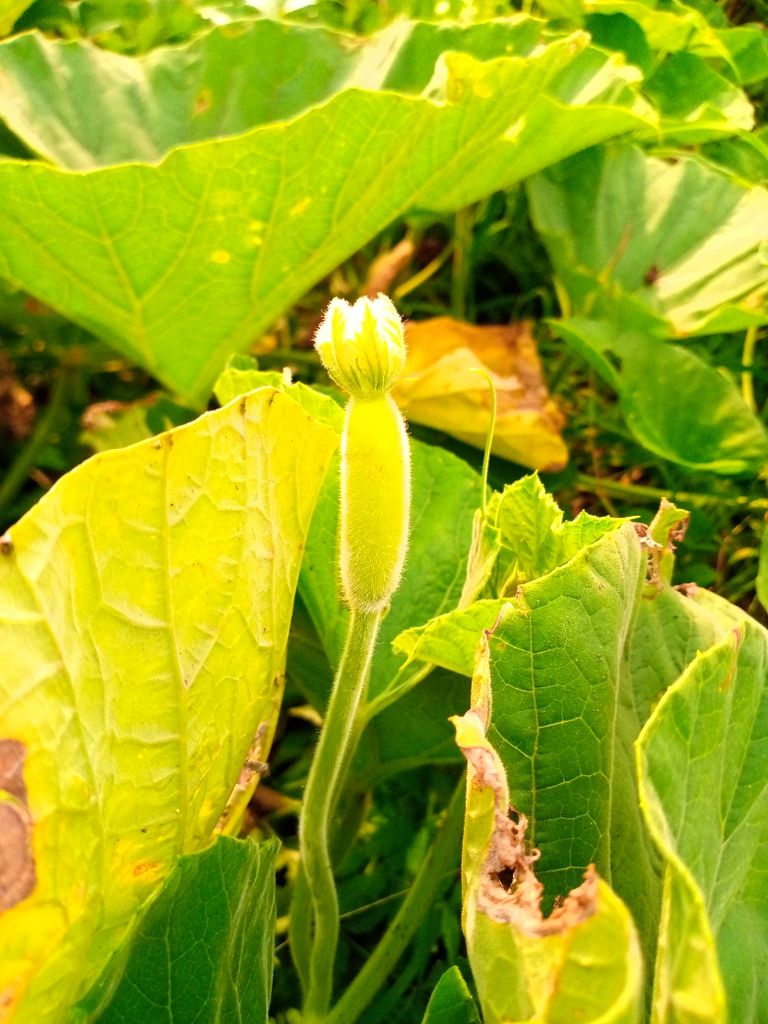
| The climate |
|---|
the climate
A climate that is neither too cold nor too hot is ideal for growing gourds. Bangladesh winter is more suitable for gourd cultivation. However, the temperature in some regions of Bangladesh sometimes reaches 100 C in winter. falls below it, which is a serious threat to gourd cultivation. Temperature difference between day and night is 8-90 degrees. The yield of gourd decreased significantly.
lifetime
The average life span of a gourd is 165-185 days.
Sowing time and seeding rate
August to October is the best time to sow the seeds. But late October sowing is best for seed production. 700-800 grams of seed is required per bigha.

| Mating and mat-to-mat distance in bed
Mother size will be 50-55 cm in diameter. Depth 50-55 cm. And bottom 45-50 cm. 60 cm on the side of the bed. 60 cm from the edge of the bed where there will be wide irrigation and drainage channels. Apart from this, mada should be made in a row at 2 meter intervals along the center of the mada. 60 cm from the outer edge of one. shall be excluded, 60 cm from the same edge of the adjacent bed. With the exception of the center of the mother, the mother should be made according to the same rules
Fertilizer quantity and method of application
These crops are long lived and bear fruit for a very long time. Therefore, for the successful cultivation of these crops, it is necessary to ensure adequate food supply for the plants. They extend their root zone far to collect enough food. Fertilizer levels are not recommended in all regions of Bangladesh subject to soil testing. Therefore, the following rates of fertilizer are recommended on the basis of experimental evidence for those regions where fertilizer levels are not specified.
Fertilizer levels and application methods for gourd crops
| Among the recommended levels of fertilizers during land preparation, cowdung should be applied after cultivation and TSP, MP, gypsum and borax fertilizers should be applied during final cultivation. After applying the recommended level of fertilizer for planting seedlings in the mother plant, the mother soil should be thoroughly soaked with water. Then after 7-10 days when 'Joe' comes, seedlings should be planted. |
|---|
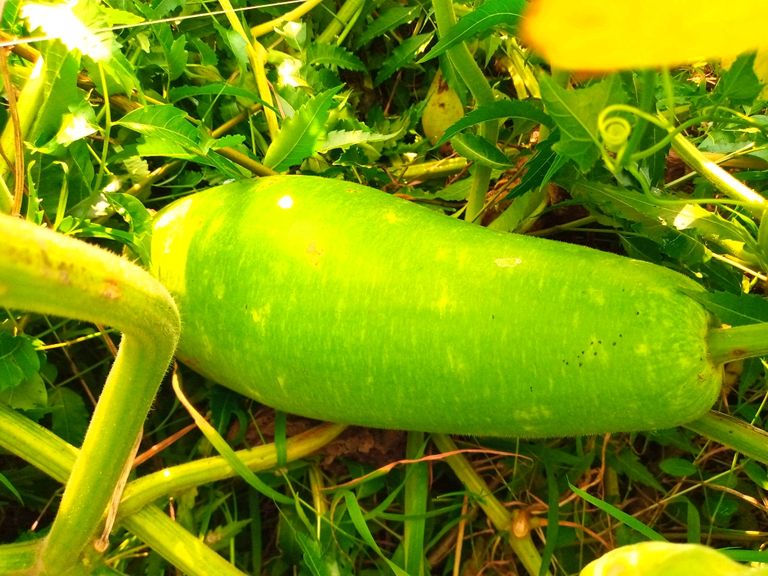
After irrigation, the soil becomes sticky. Flat dams disrupt air circulation in the root zone of plants. Therefore, every irrigation should be done with a light mulch to break up the soil at the base of the plant.
weed control
Certain species of grass are host to a disease known as bottle gourd mosaic virus. So the land should always be kept weed free from planting till harvesting. In addition, if there are weeds at the base of the plant, they absorb nutrients and sap.
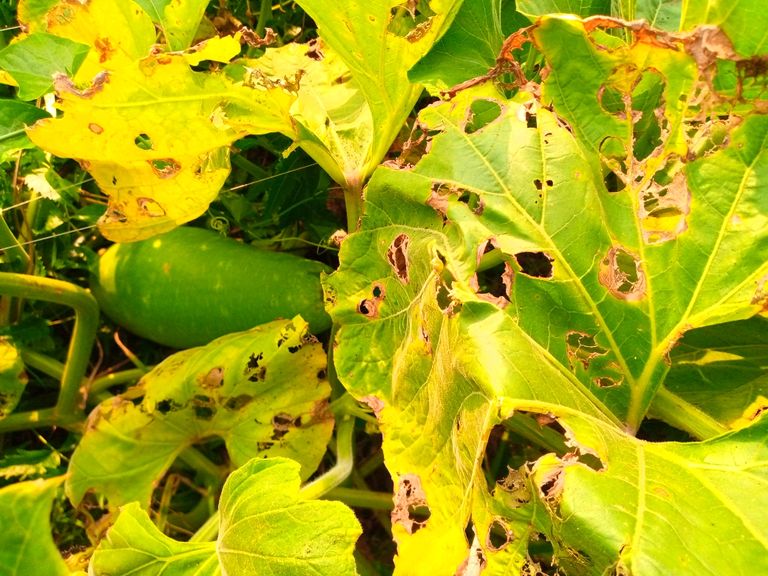
| Harmful insects
Gourd fly insect
This insect first lays its eggs in the fruit of the gourd, then the worm comes out of the egg and eats the inside of the fruit and destroys it.
Suppression system
| Clean Cultivation: Fruits infested with fly aphids rot quickly and plants drop to the ground. Infested fruit should never be left around the field. Collecting and destroying the infested fruit can greatly reduce the breeding of the fly bug. |
|---|
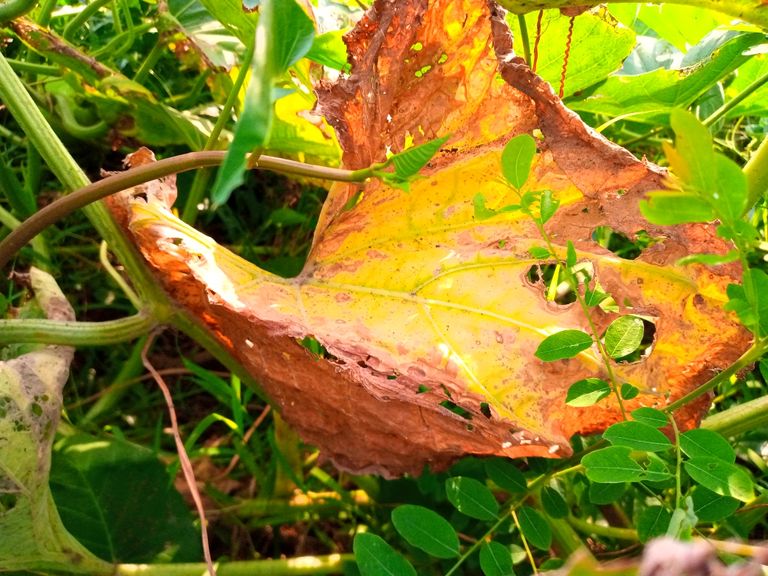
The edible maturity of the fruit can be identified as follows.
- There will be a lot of stigmas on the fruit.
- If you press on the fruit with your fingernail, the fingernail will peel off very easily.
- Fruits are ready for harvesting 12-15 days after pollination.
Cut the gourd fruit with a sharp knife leaving the long end of the fruit. Care should be taken not to damage the tree while harvesting the fruit. The more gourds can be collected, the higher the yield.
Yield: Bari Lau-1 and Bari Lau-2 can yield up to 35-40 tonnes per hectare and about 4.5-5.0 tonnes per bigha if cultivated properly.
Special thanks for duration team and @canadian-coconut @resonator and others..🏡🏡🏡🏡🏡🏡 blurtgarden 🏡🏡🏡🏡🏡 🏡🏡🏡🏡🏡🏡 blurtgarden 🏡🏡🏡🏡🏡 🏡🏡🏡🏡🏡🏡 blurtgarden 🏡🏡🏡🏡🏡 🏡🏡🏡🏡🏡🏡 blurtgarden 🏡🏡🏡🏡🏡 🏡🏡🏡🏡🏡🏡 Hivegarden 🏡🏡🏡🏡🏡 🏡🏡🏡🏡🏡🏡 Hivegarden 🏡🏡🏡🏡🏡 🏡🏡🏡🏡🏡🏡 Hivegarden 🏡🏡🏡🏡🏡 🏡🏡🏡🏡🏡🏡 Hivegarden 🏡🏡🏡🏡🏡 🏡🏡🏡🏡🏡🏡 Hivegarden 🏡🏡🏡🏡🏡 🏡🏡🏡🏡🏡🏡 Hivegarden 🏡🏡🏡🏡🏡..